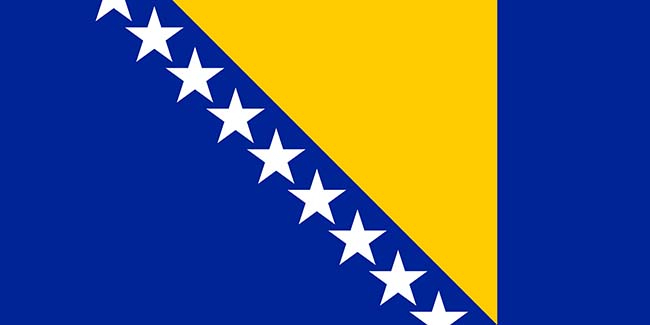Tens of thousands of people have poured into the town of Srebrenica in Bosnia to attend a ceremony to mark the 20th anniversary of the genocide in the town on Saturday July 11th.
Serbian Prime Minister Aleksandar Vucic is also reported to arrive at a memorial complex for a ceremony mourning the 8,000 Muslim men and boys killed in the eastern town by Bosnian Serb forces. In a statement released shortly before his arrival, Vucic condemned the “monstrous crime” committed in the town in July 1995, near the end of Bosnia’s inter-ethnic war.
The remains of 136 newly-identified victims may have been laid to rest on Saturday along with thousands of others already buried at a memorial centre just outside the Bosnian town.
Two decades ago, between 12,000 and 15,000 men, and several hundred women, children and the elderly fled Srebrenica. Only 3,500 of them survived. The rest were killed in bombings, ambushes and minefields.
The survivors have testified to the horrors they endured while walking through forests and mountainous terrain for days, saying they were forced to eat leaves, passed bodies and hallucinated as poisonous gases were thrown at them.
‘‘The most difficult thing was to hear those cries. You could not sleep, you would think about everything. That’s where I lost my brothers and my father. I was wounded three times,’’ one of the survivors recalled.
Twenty years later and the series of atrocities that took place in Srebrenica between July 11-13 rank among the darkest hours in Europe’s post-war history. Last weekend the world remembered the tragedy. But many feel not enough has been done to honor the victims.
Entering Srebrenica in 1995, Bosnian Serbs rounded up men and teenagers and lined them up in front of firing squads. There is still debate on whether the actions of the Serbian forces on the civilian population amounted to “genocide”, though both the UN war crimes court and International Court of Justice (ICJ) describe the atrocity as such. But beyond the politics of language, few can deny the horrors of Srebrenica, and the failure of UN troops posted in the town to protect the civilians.
Bosnian Serb leader Milorad Dodik last month described Srebrenica as “the greatest deception of the 20th century”.
Russia vetoed a UN resolution last week that would have condemned the denial of Srebrenica as genocide. Moscow called for all people responsible for the massacre to be brought to justice.
During the 1990s a number of ethnic conflicts took place in Yugoslavia among the six nations that lived there, which led to the dismantling of Yugoslavia. “In the course of the Bosnian War from 1992 to 1995 approximately 100,000 people were murdered as part of an attempt by Serbia to preserve its rule over Bosnia through ethnic cleansing.” In 1999 the Kosovo War broke out. Once again the Serbians attempted to carry out an ethnic cleansing, but this time an international force confronted them and prevented this potential genocide.
Human rights and dignities were trampled upon in Bosnia and humanitarian law was flagrantly violated which sent shock waves throughout the world. In the struggle to tell the story of Srebrenica, activists noted that bodies of those who were killed in 1995 were still being discovered in mass graves across the region. To date some 6,930 bodies have been excavated from 314 graves. Of these, 6,241 have been buried and on Saturday, 136 recently found bodies were supposed to lay in rest.
But the story of Srebrenica is not just about the mass murder of young men and teenage boys. Srebrenica was part of a larger story of ethnic cleansing in Bosnia. Thousands of Bosnian women were also abused and raped by Serbian forces. History witnesses that women were separated from men and taken to public buildings or hotels, where they were beaten, tortured, and raped cruelly at the hands of hundreds of Serbian soldiers over the course of many months. Due to these incidents, many of the female captives lost all of their strength and suffered from a number of sexually transmitted infections.
An Amnesty International’s Bosnia researcher Sumeja Tulic says “Every year on July 9, trucks carrying the remains of newly identified victims drive through the main street of Sarajevo. They make a brief stop in front of the office of the Presidency of Bosnia-Herzegovina, where hundreds of mourners await. Some of the mourners throw flowers on the canvas covering the trucks. Some pray in silence.”
Among the officials present are usually two of the three presidents of the country. The third president, representing the Serbian people, is traditionally absent. The trucks take the remains to the memorial, the crowd disperses, the officials walk back to their offices.
The Serbians’ atrocities left a bleeding wound in the hearts of the victims’ families and outraged the humans’ conscience. The mass graves being discovered with the passage of time add insult to the injuries and further reflect the perpetrators’ wickedness.
What I do not hesitate to say is that the Bosnian ethnic cleansing was certainly a “genocide” and whoever involved in the war crime must be prosecuted fairly. Moreover, in 2007, the International Criminal Court in The Hague decided to define the Srebrenica massacre as genocide and declared that Serbia had violated its responsibility to prevent genocide. A number of Serbian government officials have been accused of war crimes and genocide.

